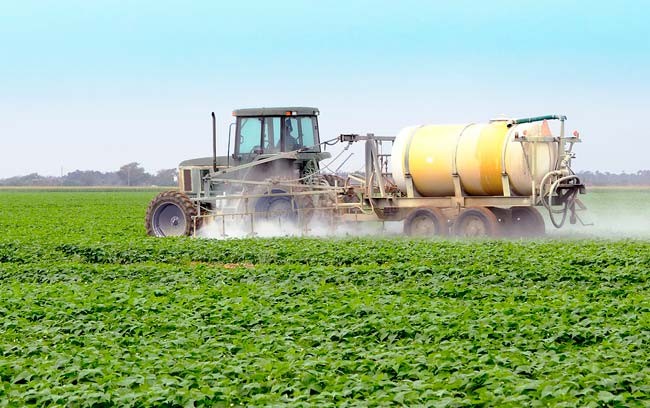- Make It Yourself Lavender Heart-Shaped Bath Bombs!
- 20 Things You Never Knew About “Down There”
- 12 Best Foods For Those Suffering From Arthritis Pain
- 12 Personal Hygiene Mistakes Almost Everyone Makes (Mom Never Told You About #4!)
- 15 Medicinal Plants And Herbs From The Cherokee People
- 12 Mind-Blowing Benefits Of Drinking Coconut Water During Pregnancy
- 12 Outstanding Winter Foods That Won’t Fatten You Up Like A Christmas Turkey
Seven Food Modifications To Avoid

Photo credit: bigstock.com
5. Chemical Pesticides
Molecular engineers who specialize in gene-splicing have labored for years to bond vegetable and fruit seedlings to herbicides and pesticides. The goal of introducing these poisonous substances into plants is to make them resistant to pests that would damage them. This increases the productivity of each plant and boosts the corporation’s’ profits. Without even knowing it, the majority of Americans eat some form of GMO products like corn, soy, cottonseed oil, or canola oil. Consuming these products with pesticides and herbicides built into their structure causes human cells to mutate, which then fuels the development of a variety of cancers and malignant tumors.
6. Benzene (Used in Coffee Decaffeination)
The seemingly benign process of removing most of the caffeine from coffee beans frequently involves soaking them in benzene, a toxic chemical that dissolves the caffeine. Long term exposure to benzene produces neurological issues such as headaches, dizziness, drowsiness, and loss of consciousness. Large doses of benzene cause dizziness, vomiting, and convulsions. Benzene can even lead to death. When the skin is exposed to benzene, it becomes red and develops blisters. Exposure to benzene vapor creates respiratory problems.
7. Carrageenan
Derived from a red seaweed compound, this emulsifying chemical is a thickening and gelling agent. Over time it can coagulate in the human body causing lesions in the digestive tract and excretory pathways. This harmful compound is found in food products like ice cream, yogurt, coffee creamer, cottage cheese, sour cream and milk substitutes like soy milk, coconut milk and almond milk. It is even permitted in organic food products. Evidence shows that as carrageenan degrades, it triggers a number of health issues including malignancies in the gastrointestinal tract, including lesions, ulceration and can lead to digestive disorders and even cancer.
READ ALSO: 5 Serious Reasons To Label GMO Foods Video
Faced with all this information, what can the average American do? We should definitely be more critical of the foods we eat and the things we put into our body. Today, you can start by reading food labels and filtering these toxins and poisons out of your diet.
References:































